
At the end of the 18th century, Goya creates an immortal series of prints “Caprichos” – whims. The series includes 80 sheets, numbered, with signatures. In these engravings the artist accuses the world of evil, obscurantism, violence, hypocrisy and fanaticism. In these satirical leaflets Goya makes fun of, using allegorical language, often instead of people depicting animals, birds.
Subject engravings are unusual, often understandable only to the artist. But nevertheless, the acuteness of social satire, ideological aspiration is absolutely clear. A number of pages are devoted to modern mores. A woman wearing a mask, giving the hand to an ugly bridegroom, is surrounded by a crowd of people wearing masks as well. A servant drags a man on his shoulders, in a child’s dress. A young woman, covering her face in terror, pulls out a tooth from the hanged man. Policemen are leading prostitutes.
A number of sheets – a satire on the church: pious parishioners pray to a tree dressed in a monk’s robe; the parrot preaches something from the pulpit. Sheets with the donkey: the donkey looks at its genealogical tree; teaches the colt; the monkey writes with a donkey portrait; two people carry asses. Owls, bats, terrible monsters surround a fallen asleep person: “A dream of reason produces monsters.”
Aesopian language, in the form of a fable, a parable, a legend, Goya strikes meticulously strikes the court and the nobility. The artistic language of Goya is exquisite, the expression is expressive, the compositions are dynamic, the types are unforgettable.
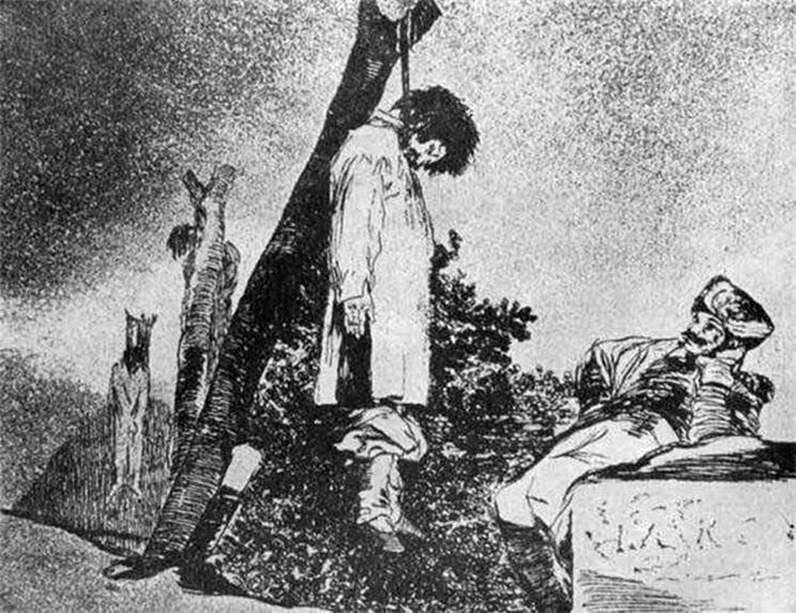 Engravings “Caprichos” (Caprices) “Horrors of War” by Francisco de Goya
Engravings “Caprichos” (Caprices) “Horrors of War” by Francisco de Goya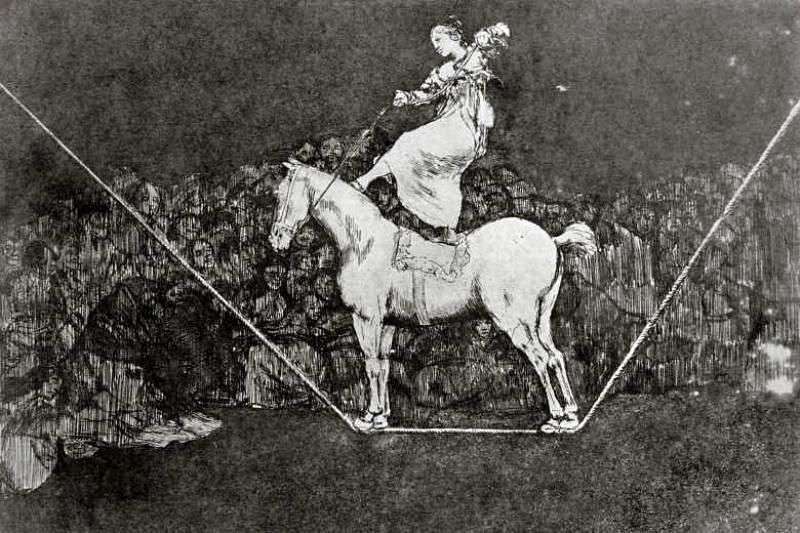 Engravings “Caprichos” “Disparate” (Senselessness) by Francisco de Goya
Engravings “Caprichos” “Disparate” (Senselessness) by Francisco de Goya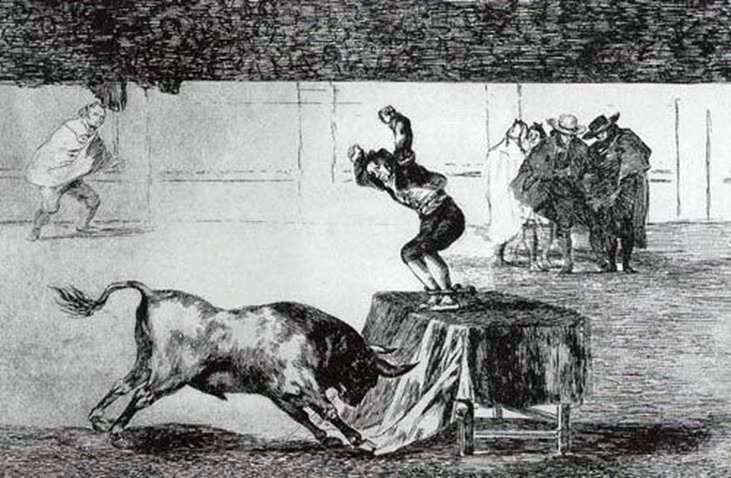 Tavromachia by Francisco de Goya
Tavromachia by Francisco de Goya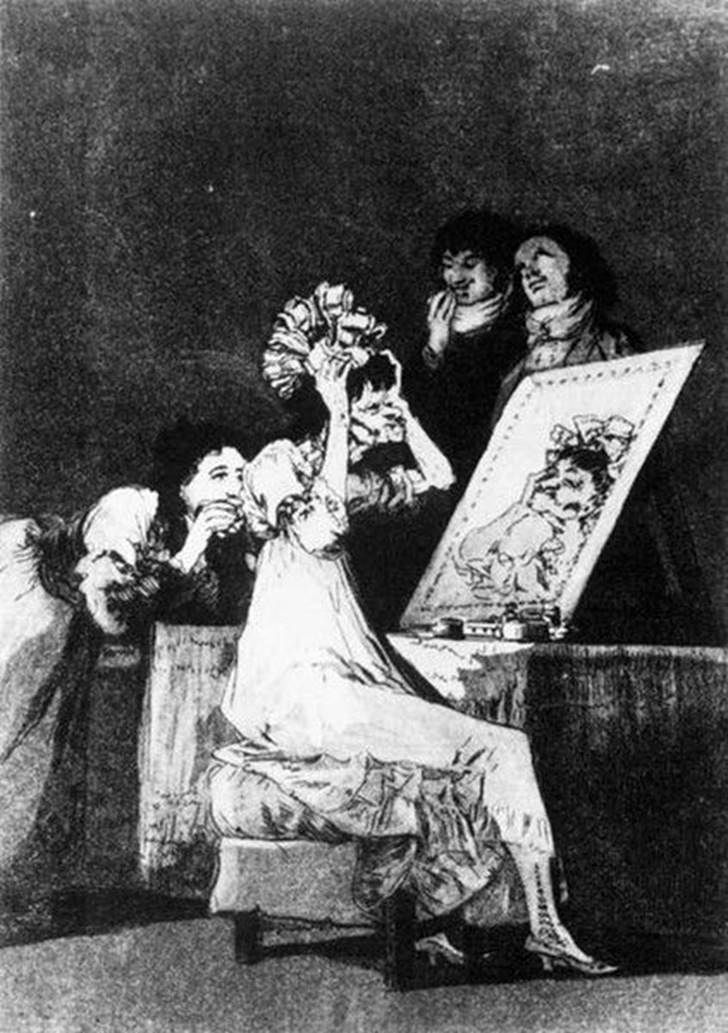 Gravures – “Capriccios” (Caprices) – Francisco de Goya
Gravures – “Capriccios” (Caprices) – Francisco de Goya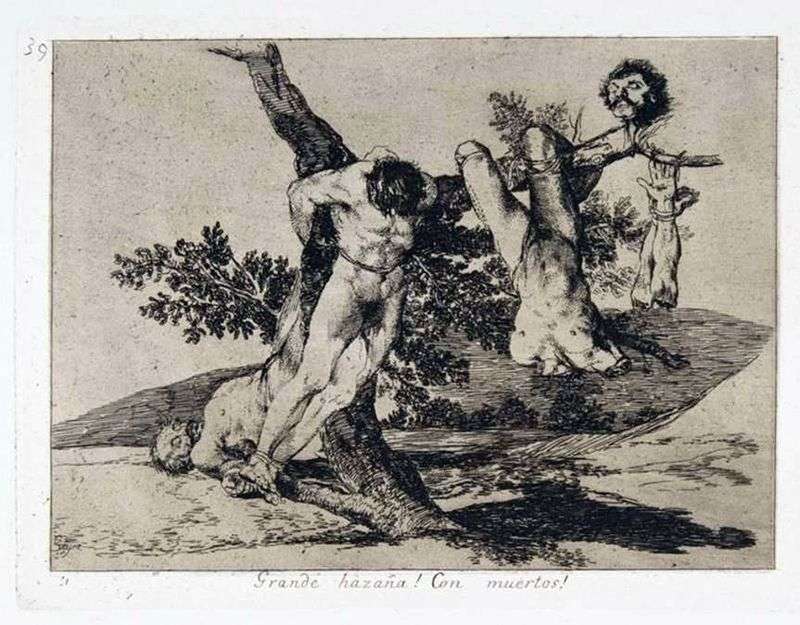 The woes of the war by Francisco de Goya
The woes of the war by Francisco de Goya Grabados “Caprichos” (Caprichos) “Horrores de la guerra” – Francisco de Goya
Grabados “Caprichos” (Caprichos) “Horrores de la guerra” – Francisco de Goya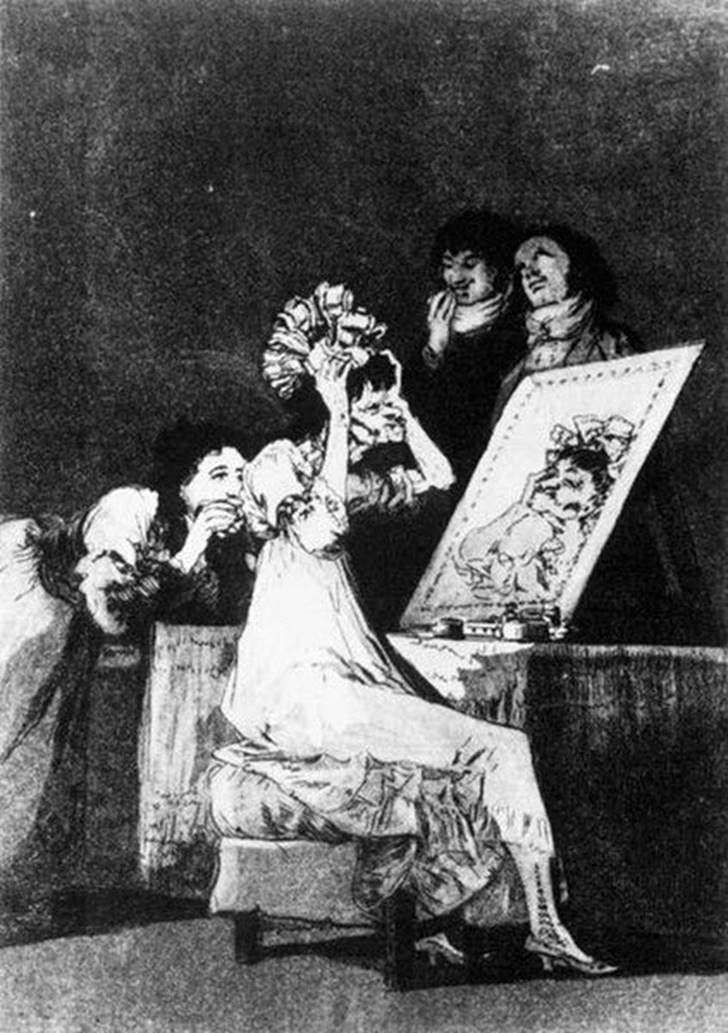 Grabados – “Caprichos” (Caprichos) – Francisco de Goya
Grabados – “Caprichos” (Caprichos) – Francisco de Goya Colossus by Francisco de Goya
Colossus by Francisco de Goya